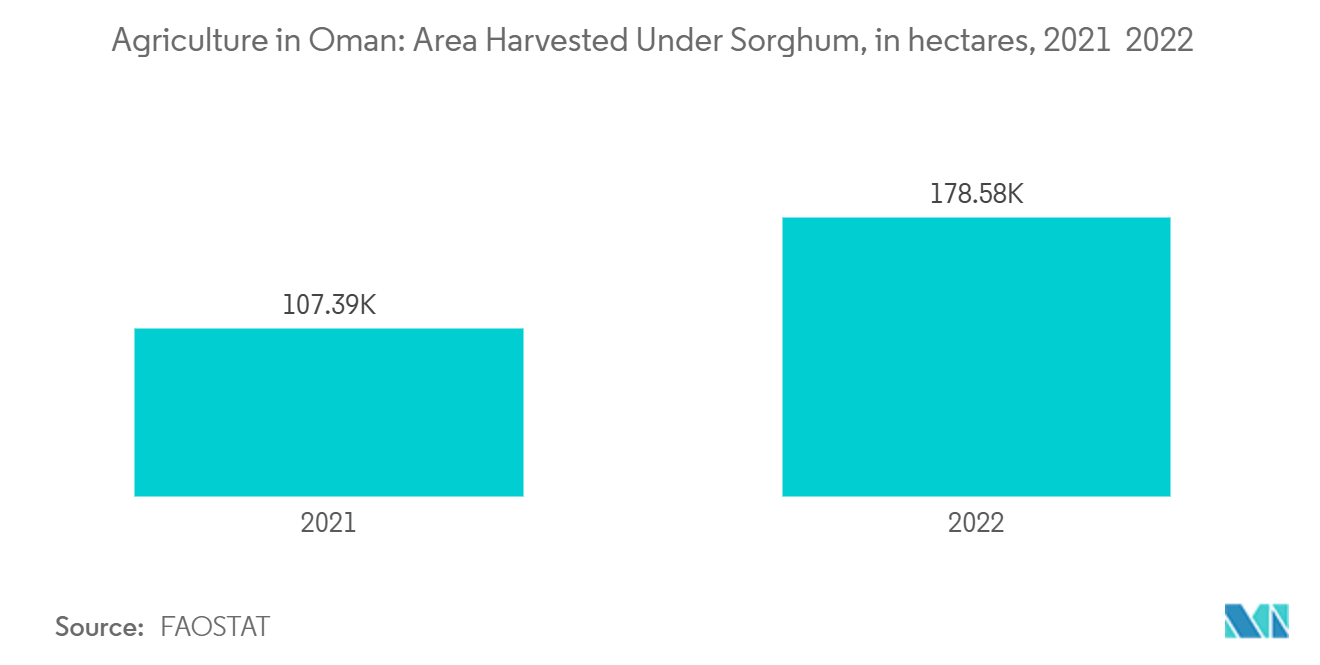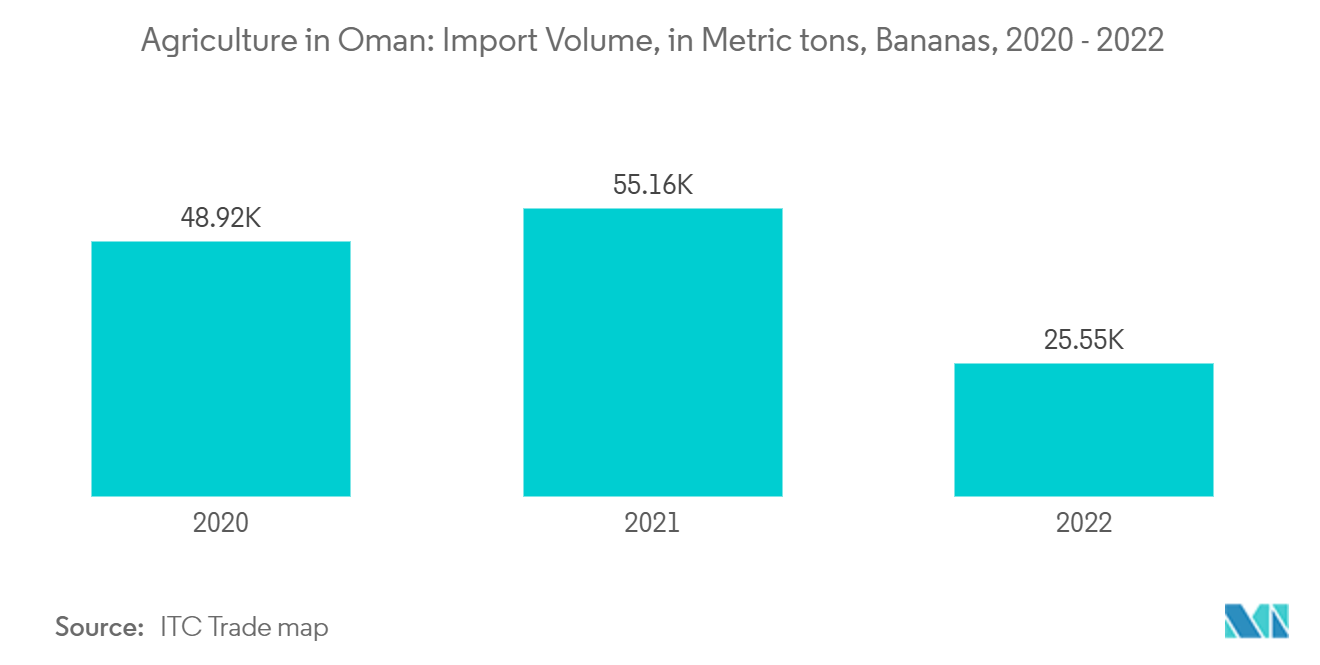Market Trends of Agriculture Industry In Oman
Growing Area under Cereal production
In recent years, Oman has seen a notable expansion in its cereal production area, driven by several pivotal factors reshaping the nation's agricultural landscape. Central to this growth is the Omani government's commitment to bolstering food security and achieving self-sufficiency. For example, the alignment of the tenth Five-Year Plan (2021-2025) with Oman Vision 2040 aims to elevate food production across diverse sources, achieving a remarkable 151% self-sufficiency rate in grains by 2024. Such ambitious self-sufficiency targets have not only propelled cereal and grain production but have also invigorated Oman's agricultural sector.
Wheat, barley, maize, and sorghum stand out as the primary cereals cultivated in Oman. Technological advancements in agriculture have been instrumental in this expansion. The integration of modern farming tools, advanced irrigation methods, and refined crop management strategies has empowered Omani farmers to enhance their cereal cultivation efficiency. Techniques like drip irrigation and other water-conserving methods have optimized water resource usage, leading to expanded arable land and heightened cereal yields. FAO statistics highlight this trend showing that the area dedicated to sorghum surged from 107,389 hectares in 2021 to 178,582 hectares in 2022, directly boosting the crop's yield and market growth.
Furthermore, as Oman's population grows, so does the domestic and international demand for cereals. This rising demand has motivated farmers to ramp up production and broaden their cultivation areas, resulting in a robust boost for Oman's cereal production sector. Oman's intensified focus on cereal production not only aims to fortify its agricultural domain but also seeks to bolster the nation's economic trajectory. Given these dynamics, including government backing, modern farming adoptions, and surging local demand, Oman's cereal production is poised for continued growth in the coming years.

Rising Government Backing to Curb Import Reliance
Oman has historically relied on imports to fulfil its domestic needs. Recently, imports have predominantly satisfied Oman's demand for fruits, vegetables, and cereals. In a bid to curtail this dependency and strengthen its economic foundation, the Omani government has rolled out a series of targeted policies. These initiatives aim to bolster domestic production across multiple sectors. A notable example is in 2023, when the Ministry of Agriculture, Fisheries and Water Resources (MAFWR) launched 15 new projects, investing RO83 million (USD 215.6 million) to enhance the nation's food security. This endeavour aligns with Oman's broader strategy of economic diversification, emphasizing self-sufficiency and a diminished reliance on imports.
In tandem with these efforts, the Omani government is also championing domestic production through a suite of incentives and subsidies. These measures are designed to empower local industries and businesses, enabling them to ramp up production and curtail import needs. For instance, in 2022, MAFWR took a significant step by distributing free seedlings to Omani farmers. This initiative aimed to motivate farmers to set up commercial model farms, with a focus on diverse fruit cultivation. MAFWR provided mango and Omani lemon seedlings at no cost, while other fruit seedlings were offered at a minimal price. Such initiatives underscore the government's commitment to boosting local agricultural production and curtailing imports.
Data indicates a shift in Oman's import patterns. While imports of agricultural products, including fruits, were on the rise until 2021, they witnessed a downturn in 2022, thanks to the government's self-sufficiency policies. According to the ITC trade map, banana imports surged from 50,939 metric tons in 2019 to 55,157 metric tons in 2021. However, this figure plummeted to 25,554 metric tons in 2022. This decline underscores the success of Oman's self-sufficiency drive and the uptick in local production. Thus, through a comprehensive strategy that champions domestic production, nurtures innovation, and invests in food security, the Omani government is steadfast in its mission to reduce import dependency and bolster its agricultural sector.


